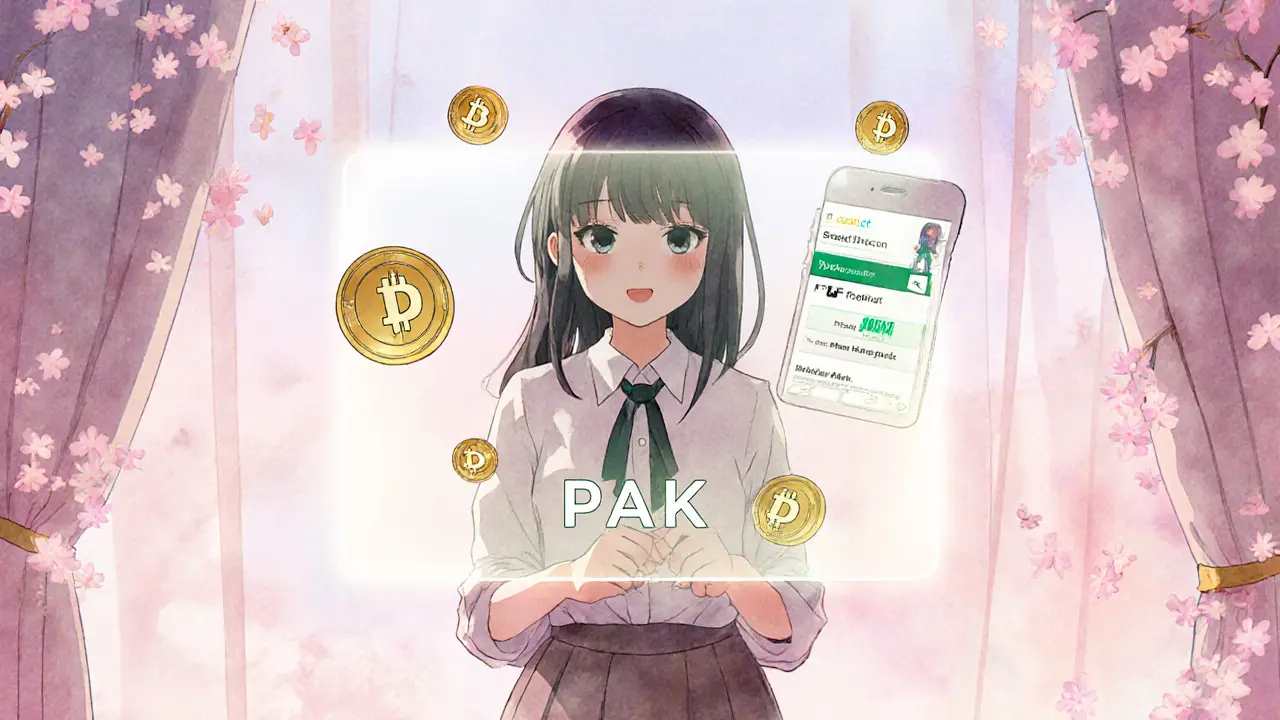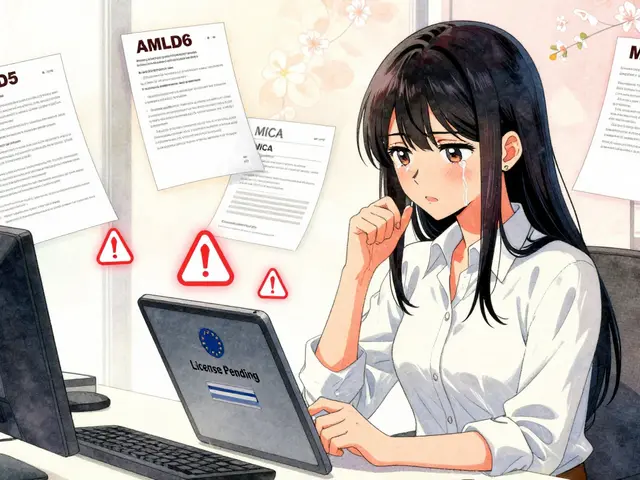What is Pakcoin (PAK) Crypto Coin? Facts, History, and Real-World Use

Pakcoin (PAK) Staking Calculator
Staking Calculator
Pakcoin (PAK) is a digital currency created in Pakistan in 2015, designed to be a local solution for fast, low-cost payments. It was the first cryptocurrency launched in the country, aiming to solve payment problems for everyday users in Pakistan while still allowing global transfers. Unlike Bitcoin or Ethereum, Pakcoin never gained global attention. Today, it operates as a micro-cap coin with very limited trading volume, few exchanges, and almost no community activity outside Pakistan.
How Pakcoin Started and What Changed
Pakcoin launched on June 6, 2015, as a Proof of Work (PoW) coin using the Scrypt algorithm - the same one used by Litecoin. Its goal was simple: let people in Pakistan send money instantly without banks or high fees. At launch, it had a total supply of 182 million PAK tokens, with a block time of just 60 seconds, meaning transactions confirmed quickly.
In January 2019, Pakcoin made a major shift: it switched from PoW to Proof of Stake (PoS). This wasn’t just a technical update - it was a survival move. PoW requires powerful computers that use a lot of electricity, which isn’t practical for most people in Pakistan. PoS lets users earn rewards by holding coins and locking them up (staking), which is cheaper and easier. The change opened the door for everyday users to earn passive income without running mining rigs.
How Pakcoin Works Today
Today, Pakcoin runs on a PoS system with a fixed total supply of 182 million PAK. But only about 84.36 million are in circulation, meaning nearly half the coins haven’t been released yet. The current price hovers around $0.0028, according to CoinMarketCap, though other trackers like CoinLore show slightly higher values - a sign of how unreliable price data is for such a small coin.
Staking is the main way people interact with Pakcoin now. The official platform, Staklet, lets you stake your PAK without keeping your computer on all the time. You earn between 3% and 6% annual interest, depending on how many people are staking overall. That’s not bad compared to bank interest in Pakistan, but it’s not enough to attract serious investors.
Transaction fees are low - between 0.001 and 0.1 PAK - and confirmations happen every minute. That’s faster than Bitcoin’s 10-minute blocks, but slower than most modern coins. The real issue isn’t speed - it’s adoption.
Where You Can Use Pakcoin
Pakcoin’s biggest claim to fame is its integration with Pakistani services. You can use it to buy mobile top-ups and pay for services on Daraz.pk and Careem through its official e-wallet. There’s also Adaigi.com, a merchant platform that lets small businesses in Pakistan accept PAK payments. But here’s the catch: these integrations are barely used.
There are no reviews on Adaigi.com. No user testimonials. No news articles showing real people using it to pay for groceries or ride-hailing. Even on Daraz.pk, PAK isn’t listed as a payment option in the checkout. It’s technically possible, but practically invisible.
Compare that to Bitcoin, which is accepted by over 100,000 merchants worldwide. Or even Dogecoin, which is used for tipping on Reddit. Pakcoin has no such presence. It’s like having a key that fits a lock - but no one installed the lock.

Where to Buy and Trade Pakcoin
You can buy PAK on just four exchanges, according to CoinMarketCap. None of them are major platforms like Binance, Coinbase, or Kraken. The 24-hour trading volume is around $3,410. That’s less than what some meme coins trade in a single hour.
Because of this, buying or selling large amounts of PAK is nearly impossible. If you try to sell 10,000 PAK, you’ll likely crash the price. Liquidity is so low that even small trades can cause wild price swings. Most traders avoid it entirely.
Even the price data is inconsistent. CoinMarketCap says $0.0028. CoinLore says $0.0062. That’s more than a 100% difference. This kind of discrepancy doesn’t happen with major coins. It’s a red flag that the market is thin, manipulated, or not properly tracked.
Why Pakcoin Hasn’t Grown
Pakcoin’s biggest problem isn’t technology - it’s everything else. Pakistan’s central bank has warned against cryptocurrencies since 2018. That means banks won’t support PAK, businesses won’t promote it, and regulators won’t protect users.
There’s no developer activity. No GitHub repository. No official blog updates since 2020. No community forums. Bitcointalk.org, where crypto projects used to thrive, has only 12 threads about Pakcoin in the last year. Compare that to thousands for even obscure coins.
Its market cap is $339,630. That’s tiny. CoinGecko says 92% of cryptocurrencies under $500,000 fail within five years. Pakcoin is already past that mark - and still hasn’t grown. No major exchange has listed it. No institutional investor has touched it. No media outlet covers it.
What Experts Say About Its Future
Some price prediction sites like CoinLore suggest PAK could hit $0.03 by 2025. That sounds exciting - until you do the math. That’s a 1,000% increase from today’s price. But for that to happen, Pakcoin would need to attract millions of new users, get listed on major exchanges, and convince Pakistani businesses to adopt it.
There’s zero evidence that’s happening. No partnerships. No marketing. No updates. The February 2020 announcement about cross-chain support - meaning PAK could move to Ethereum or Binance Smart Chain - never materialized. Five years later, it’s still just a promise.
Technical indicators show a slight bullish trend, but that’s meaningless for a coin with no volume. A few buyers can push the price up temporarily. That doesn’t mean it’s sustainable.
Should You Buy or Use Pakcoin?
If you’re in Pakistan and want to experiment with a local crypto, PAK is technically possible. You can buy a few tokens, stake them on Staklet, and earn a few cents in interest. It’s low-risk because you’re not investing much.
But if you’re looking to invest, trade, or use it as real money - don’t. There’s no liquidity. No adoption. No future roadmap. The only people benefiting are those who bought early and sold high. Everyone else is holding a digital asset with no real-world value.
Pakcoin isn’t a scam. It was created with good intentions. But good intentions don’t build a currency. Real use does. And Pakcoin has none.
Final Thoughts
Pakcoin is a relic of 2015 - a country’s first attempt at cryptocurrency that never escaped its local roots. It’s not dead, but it’s not alive either. It’s stuck in limbo: technically functional, practically useless.
Its story is a warning: even if you build something useful, without adoption, marketing, and regulatory support, it won’t survive. Pakcoin didn’t fail because of bad code. It failed because no one cared enough to make it matter.
If you’re curious, you can buy a few PAK coins for less than a dollar. Stake them. See what happens. But don’t expect it to change your life. Or even your wallet.





Bill Henry
November 19, 2025 AT 14:04jesani amit
November 20, 2025 AT 21:24Ella Davies
November 21, 2025 AT 09:06garrett goggin
November 22, 2025 AT 03:23Jess Zafarris
November 23, 2025 AT 08:58Carol Wyss
November 23, 2025 AT 14:39Teresa Duffy
November 25, 2025 AT 10:21Bruce Murray
November 25, 2025 AT 14:03Henry Lu
November 25, 2025 AT 19:06Peter Rossiter
November 27, 2025 AT 09:29nikhil .m445
November 27, 2025 AT 11:35Aryan Juned
November 28, 2025 AT 03:21Barbara Kiss
November 28, 2025 AT 05:01Mike Gransky
November 28, 2025 AT 14:15Rick Mendoza
November 29, 2025 AT 18:13Lori Holton
November 30, 2025 AT 15:40Sean Pollock
December 2, 2025 AT 07:36Nathan Ross
December 4, 2025 AT 05:57Nataly Soares da Mota
December 4, 2025 AT 15:22